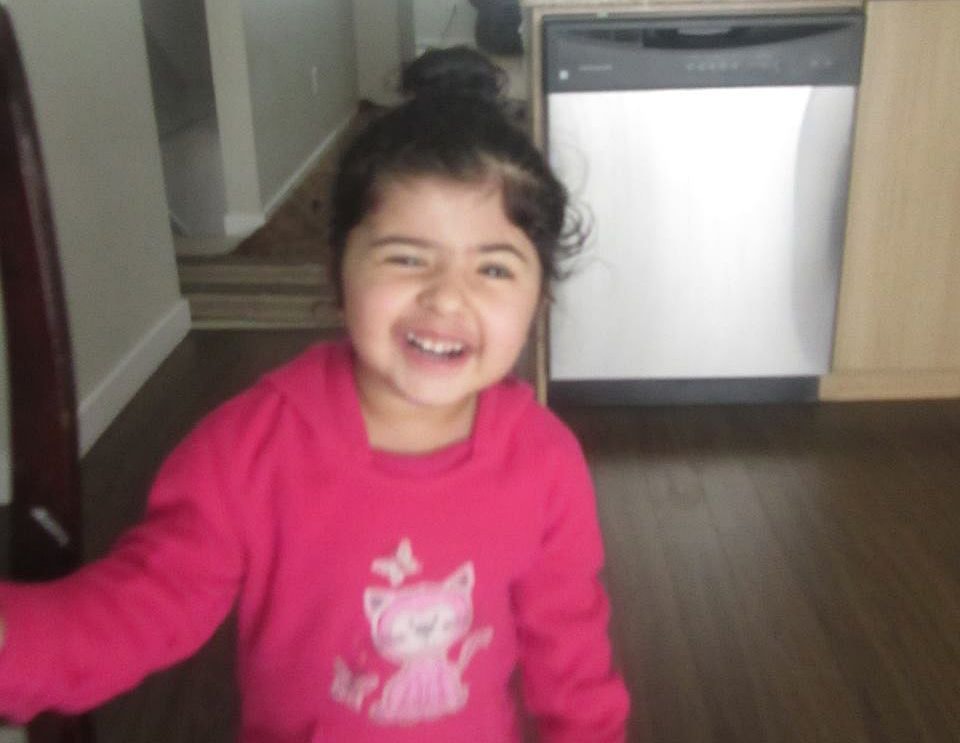Nimrat Kaur Gill, 3, died of natural causes and her death was not the result of any wrongdoing at Abbotsford Regional Hospital, according to a coroner’s report released this week.
Gill died on Feb. 7, 2017 during her second visit to hospital in two days.
“I have lost my future,” the girl’s mother, Balraj Gill, told The News in February. “I lost my sweetie pie.”
Coroner Adele Lambert concluded that Gill died of sepsis from a group A Streptococcus pneumonia infection.
Lambert laid out a timeline leading up to Gill’s death:
- November 2016: She “appeared well” at routine family doctor visit
- Feb. 6, 2017: She was taken to hospital with a fever, cough and vomiting. She was congested but her chest was clear. Her body temperature returned to normal and she was sent home at 5:40 a.m.
- Feb. 7, 2017: At 5:20 a.m., she was taken back to the hospital, coughing, vomiting and with rapid breathing. Her vital signs were “not concerning” and her lungs were clear.
- At 6:45 a.m., she had vomited more and her temperature had increased.
- Pneumonia was found in her left lung in an x-ray taken at 7:55 a.m.
- At 10:14 a.m., Gill went into cardio-respiratory arrest as hospital staff were conducting more tests.
- “Extensive resuscitation was unsuccessful.” Gill was pronounced dead at 11:10 a.m.
The relatively uncommon infection that killed Gill is often deadly, “unexpected and rapid in nature,” Lambert wrote.
An autopsy found a collapsed left lung, acute bronchopneumonia and abscess and pus in the pleural cavity. She also had infections in her urinary and upper respiratory tracts.
Drugs found in her system were consistent with the medical treatment she received and did not contribute to Gill’s death, the coroner determined.
The report did not make any recommendations but Fraser Health previously identified six actions to take following a quality of care review: an pediatric early warning signs decision support tool for emergency rooms, sepsis screening for pediatric patients, regular simulation training for pediatric emergencies, improved mechanisms for collaboration between pediatric and emergency departments, improved education for clinical documentations and a review of shift change protocols.
The actions from the health authority’s patient safety review are currently being rolled out throughout the region, according to Abbotsford Regional Hospital’s site medical director, Michael Mewton.
Medical staff will soon have more opportunities to practice on sophisticated mannequins at the new training lab set to open in Spring 2018, Mewton said.
Changes coming to detect infections like the one that killed Gill will improve care across the Fraser Health’s jurisdiction but, Mewton said, it’s not clear if such processes would have save her life had they been in place before February.
“It’s very difficult to say had this been identified earlier would have made any difference in the outcome,” he said.
Mewton said there are a lot of moving parts involved in implementing all six actions and he could not provide a concrete timeline for when they would be fully in place in all Fraser Health facilities.
@KelvinGawley
kelvin.gawley@abbynews.com
Like us on Facebook and follow us on Twitter.
